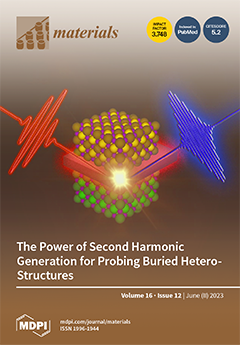ZrB
2-SiC-Zr
2Al
4C
5 multi-phase ceramics with uniform structure and high density were successfully prepared through the introduction of in situ synthesized Zr
2Al
4C
5 into ZrB
2-SiC ceramic via SPS at 1800 °C. A systematic analysis and discussion of the experimental results and proposed mechanisms were carried out to demonstrate the composition-dependent sintering properties, mechanical properties and oxidation behavior. The results showed that the in situ synthesized Zr
2Al
4C
5 could be evenly distributed in the ZrB
2-SiC ceramic matrix and inhibited the growth of ZrB
2 grains, which played a positive role in the sintering densification of the composite ceramics. With increasing Zr
2Al
4C
5 content, the Vickers hardness and Young’s modulus of composite ceramics gradually decreased. The fracture toughness showed a trend that first increased and then decreased, and was increased by about 30% compared with ZrB
2-SiC ceramics. The major phases resulting from the oxidation of samples were ZrO
2, ZrSiO
4, aluminosilicate and SiO
2 glass. With increasing Zr
2Al
4C
5 content, the oxidative weight showed a trend that first increased then decreased; the composite ceramic with 30 vol.% Zr
2Al
4C
5 showed the smallest oxidative weight gain. We believe that the presence of Zr
2Al
4C
5 results in the formation of Al
2O
3 during the oxidation process, subsequently resulting in a lowering of the viscosity of the glassy silica scale, which in turn intensifies the oxidation of the composite ceramics. This would also increase oxygen permeation through the scale, adversely affecting the oxidation resistance of the composites with high Zr
2Al
4C
5 content.
Full article






